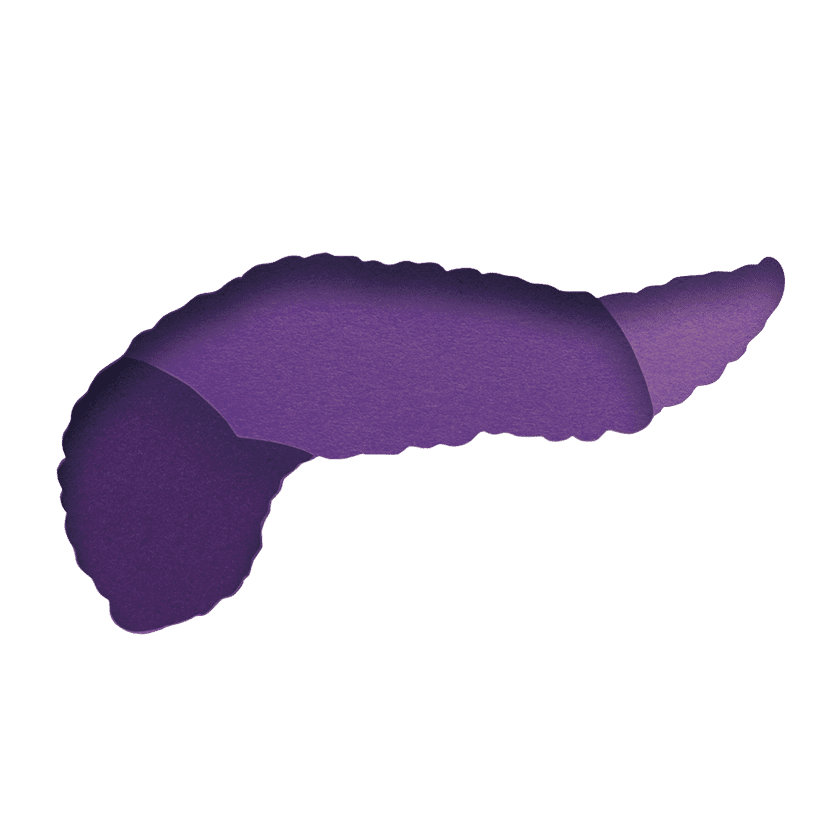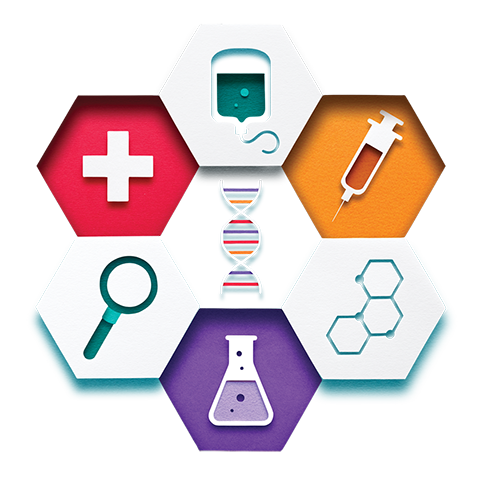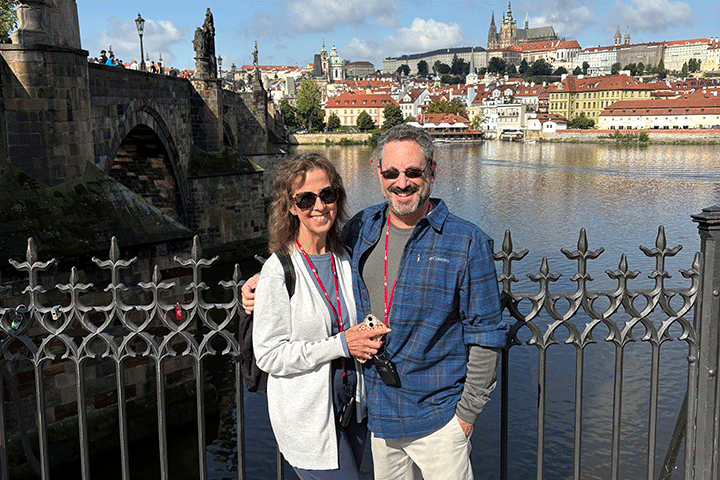A Two-Part Journey, So Far

- Unexplained weight loss leads to pancreatic neuroendocrine tumor diagnosis
- Surgery to remove the tumor
- Recurrence and life on treatment
- Psychological support
My name is Pablo Emilio Rodriguez Sanchez. I’m 58 years old and live in Bogotá, Colombia.
My journey with pancreatic neuroendocrine cancer is divided into two parts. The first part started in September 2019, when my doctor ordered an abdominal ultrasound to know more about unexplained weight loss. The results showed a mass near my pancreas. Days later, an MRI of my abdomen confirmed the diagnosis of a cancerous tumor situated in my pancreas.
A Quick Response to My Diagnosis
I panicked. I was in shock. Because of the diagnosis, I rushed to the emergency room at Fundación Santa Fe de Bogotá. There I was referred to hepatobiliary specialists and underwent a positron emission tomography (PET scan) to identify the exact location and rule out any metastases.
This study showed that the tumor was located in the tail of the pancreas, that there was no metastasis, and that it was a stage II pancreatic neuroendocrine tumor. The doctors told me I needed surgery to remove the affected part of the pancreas and spleen, to destroy the cancer completely.
I underwent surgery on November 7, 2019, at Fundación Santa Fe. The six-hour surgery was performed by Dr. Diego Triviño and his medical team, and it was a success. After surgery, it was necessary to control my blood sugar levels with 500mg doses of metformin, since I was hyperglycemic. My doctors were afraid my blood sugar level would rise, and I could develop diabetes. Fortunately, after several months of diet, exercise, and regularly taking the medicine, my blood sugar was under control and I was able to stop taking metformin.
On a Steady Course
Twice a year, I had check-ups with both Dr. Triviño and my endocrinologist, Dr. César Gutiérrez. They ran blood tests, including one to measure chromogranin A (CgA) levels, and I also had MRIs with contrast. Then, in October 2020, my endocrinologist ordered another PET with Gallium 68, to check the condition of my body and rule out new tumors. The result of this test was satisfactory, as it showed that my body was free of tumors.
I continued to have check-ups and examinations every six months, and to take care of my diet and exercise, with no signs of new tumors. However, in January of this year, my surgeon ordered a new PET/CT study with Gallium 68 DOTANOC, which increases the detection of somatostatin receptors. This is the beginning of the second part of my story.
The Cancer Returns
In the first weeks of February 2023, I had a PET scan at the Fundación Santa Fe, and on February 27 I received the results. Diagnosis: “Presence of multiple lesions with high somatostatin receptor expression located in the liver, with metastatic appearance and presence of two nodes with high somatostatin receptor expression located in the mesentery and retroperitoneum, with tumor appearance.”
That day, my family and I were in shock again. I immediately contacted my surgeon, Dr. Triviño, and my endocrinologist, Dr. Gutiérrez. The surgeon saw me the next day. He reviewed the results and immediately referred me to the oncology department at the Fundación Santa Fe. A few days later, I had an appointment with two oncologists: Dr. Deyanira González of Fundación Santa Fe, one of the specialists in oncological endocrinology who knows the most about neuroendocrine tumors in the country, and Dr. Henry Vargas of Los Cobos Medical Center. Both told me that these tumors could not be cured and that the recommended treatment involved monthly injections of lanreotide 120mg, and it was a treatment that would continue indefinitely.
The oncologists explained to me that the primary goal was to prevent the tumors from continuing to grow. They also said that during treatment, it might be necessary to use other medications, without ruling out liver surgery later on. I was told that lanreotide is a kind of chemotherapy, but it’s different from standard chemotherapy because it targets and regulates hormones, not cancer cells. The side effects could include abdominal pain, nausea, diarrhea, general discomfort, weight loss, and an increase in blood sugar levels.
Life on Lanreotide
On March 17, 2023 I received the first dose of the injection with a needle prick in my buttock. That day I did not feel any symptoms, but the next couple of days I experienced some nausea, and made frequent trips to the bathroom because my stomach was upset, and I had to urinate urgently. In addition, for the first three days, both urine and stool were light-colored, but by the fourth day after the injection, they returned to their normal color. My blood sugar levels were also quite high, so my endocrinologist again prescribed 500mg of metformin once a day.
To this date, I received four doses of the drug and the side effects were weight loss (almost a kilo or 2.2 pounds) and increased blood sugar levels, especially the first few days after the injection.
I have scheduled check-ups in July, both with the surgeons and with the oncologists and endocrinologists. I’m keeping my hopes up and staying positive, I believe that with treatment we can get this disease under control. During the last consultation Dr. Vargas ordered another PET/CT study with Gallium 68 DOTANOC, in mid-July, as a part of a follow-up. In the meantime, my endocrinologist, Dr. Gutiérrez, switched me from metformin to a new drug called Xigduo XR 5mg/1000mg to help better control my blood sugar levels.
Finding Psychological Support
The tremendous emotional support of my family has been essential for me after receiving the news of the unexpected recurrence of the tumors. However, I decided to seek psychological support so as not to collapse and to keep a positive attitude as long as possible, though I must admit, there were days when I felt absolutely terrible. When I realize that I am going through a low point, I look at myself in front of the mirror and say to myself: “Let’s see Pablo, this is not going to be too big for you, we are going to get through it.”
My psychologist, Dr. Liliana Cruz, in addition to being a life coach, is a specialist in integrative transpersonal therapy. She provided me with tools that allowed me to learn to navigate challenging moments, to identify the purpose of my experience with cancer, to effectively manage my fears, and to get the best out of myself to enjoy every day of life with my family and my best friends. This psychological support has been and will continue to be very important in times like the ones my family and I are currently going through.
My wish is to continue sharing with all of you, if you allow me, the progress of my treatment, my experiences, and the lessons learned. I hope my journey can be a guide to others who are facing similar situations. Together we can hope for a brighter tomorrow as science continues to advance.
Thank you very much for reading my story. A thousand blessings.
Pablo submitted his story in Spanish, and we translated it for our English readers.







